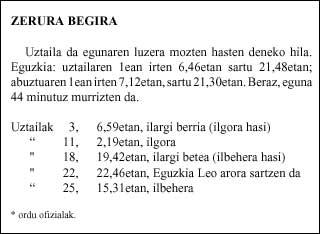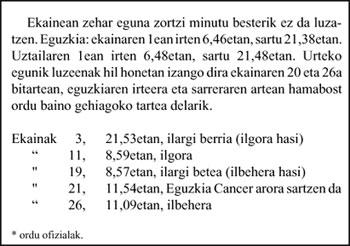Only in fallows?
2000/10/24 Imaz Amiano, Eneko - Elhuyar Zientziaren Komunikazioa
Some love thistles, of course to eat and not to sit on. But is that the only use of thistles?
I don't think so! Fossil fuels are increasingly expensive. This and its impact on the environment make, among other things, news about alternative energy sources collected. Some of them are curious. For example, two thermal power plants will be set up to use orchard thistle (Cynara cardunculus) as raw material.
Biomass as a raw material for energy has been sugar cane. But in Spain, specifically in Burgos and Huesca, the use of orchard thistle as raw material has been proposed.
Dry ground plant
Orchard thistle grows in soils rich in organic matter of the Mediterranean region. It is a precursor of the artichoke (Cynara scolymus) and, like this one, is sown in the orchards to eat the mammal of the flowers. The orchard thistle can grow 1.5 meters and does not bloom during the first year. It is a species well adapted to summer droughts, which does not support the soil well. However, annual minimum rainfall of 400 mm.
Seeds should be sown before or after winter ice. And the first month of sowing does not suffer ice. We have said that the first year does not bloom and the right size for its exploitation will take it in two years.
You have to cut the orchard thistle that has not yet dried completely, and that is the almost unique resemblance to the sugar cane that we mentioned above. It is not advisable to lose seeds, that is, to fall to the ground, which are the ones that have the greatest value in terms of obtaining energy.
Last year they planted the first harvest and saw two problems. On the one hand, they sowed in excess and the thistles grew very thick. And the thicker the stem, the harder it is, causing problems to cut it and manage it properly. On the other hand, being sweet plants, mice and other rodents had to eat bapo in the fields of cultivation. However, with the arrival of this year's sowing a genetically modified variety has been created and used. The new variety is more bitter and therefore less attractive to rodents.
The plant can be up to three meters high and seven meters of root. And thanks to these roots can be cut for seven consecutive years and the plant will grow again without planting. This significantly reduces costs and therefore attracts farmers.
Results of 15 years of research
This new essay is the result of fifteen years of research, which Professor of Plant Production, Jesús Fernández, has done during all those years at the School of Engineers of Madrid. Each of the plants being built in Burgos and Huesca will have a capacity to burn 105,000 tons of thistle - straw per year and a production of 91.2 GW (equivalent to that used by 30,000 people in an approximate year). In order for the cultivation of the orchard to yield benefits, it is estimated that annual and per hectare production will be 17,000 tons (taking into account the aid granted by the European Union).

Gai honi buruzko eduki gehiago
Elhuyarrek garatutako teknologia





